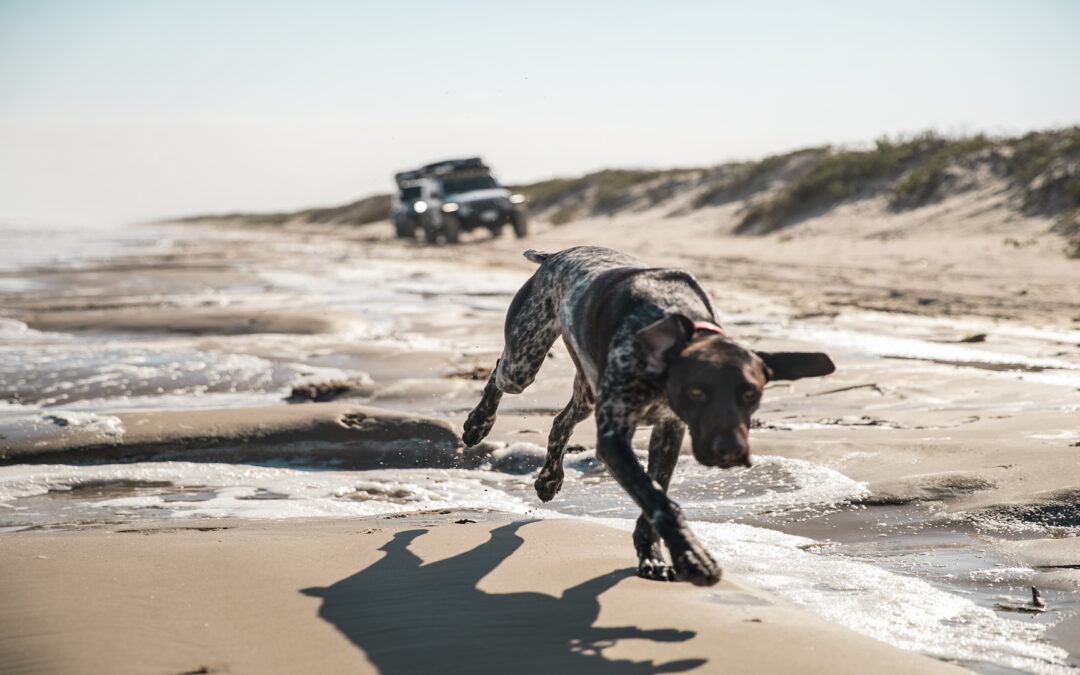The van Stralen family had another epic adventure last month exploring and cleaning up almost 60 miles of beautiful coastline off the Gulf of Mexico.
By Epic Family Road Trip OB 4010
This week we had the privilege of camping on the beach at the Padre Island National Seashore.
This is the longest undeveloped barrier island in the world and is found on the west shore of the Gulf of Mexico in the great state of Texas.
We arrived in the afternoon and pulled up to the ranger station to get our passes. We were able to use our National Park annual passes to get in. If you don’t have a NPS annual pass it’s $25 per vehicle for a 7-day pass.
I asked the Ranger where the designated camp areas were and he said “anywhere you want.”
He said, “just drive down the beach as far as you want and when you find a spot you like set up camp.”
That’s our kind of camping!For the 1st mile or so, the beach is quite hard packed and it is safe to drive a motorhome or two-wheel drive vehicle.
The first few miles are naturally a little busier than the rest of the seashore.
As you continue to drive farther along the beach, the sand becomes softer and there are fewer vehicle tracks to follow. I’m sure it gets busier in the summer but in February when we were there, we had the place pretty much to ourselves.
On the first night, we drove about 10 miles in, found a great spot, backed up towards the dunes and set up camp for the night. The wind was blowing pretty hard off the Gulf but we were able to find shelter behind the Jeeps and enjoy a wonderful campfire dinner. That night we fell asleep to the sound of the high tide rolling up the shore only 30 feet from the Jeeps. The next morning we got up and made breakfast, packed up camp and carried on down the beach. Our goal was to make it all the way to mile 60 at the end of the island.
The skies were stormy and the wind was blowing hard off the Gulf. The waves were coming in almost all the way up to the dunes. We kept on moving through the soft deep sand that surrounds the dune area. Vehicles are allowed to drive on the beach but not in the dunes.
With both vehicles in four-wheel-drive we pressed on until we decided we couldn’t go farther without driving through saltwater for hours. As you know, driving through saltwater can be very hard on your vehicle and can cause all kinds of rust issues.
We made the decision to turn around, go back a few miles to an area we had made note of that looked good for camping, and set up our camp. Although we didn’t make it right to the end of the north island this time, we plan to be back one day to drive its entire length.
The next morning we packed up our camp, spent some time picking up litter and plastic that had washed in during the storm, and then headed off to North Padre. We had heard about a beach cleanup on the South Island being organized by our friend @adventureoverland and @costacleanups so we decided to head that way.
To get down to the South Island you need to get back onto the mainland, jump on the freeway, and head about 3 hours south.
By the time we arrived, the beach cleanup event was starting to wrap up. We said hi to everybody and then drove down the beach to at least do what we could to help out and make the trip worthwhile.
The volunteers had done such an amazing job cleaning up that we had to walk way back into the dunes to find any plastic and trash to pick up.
All in all 9120 pounds of trash were removed from the beach that day.
Thanks to all the volunteers who work so hard to help keep these two amazing barrier islands clean and litter free. Our oceans are delicate and require our help to remain clean and natural. We have found that the Overland community in general is very involved in concepts like “leave no trace” where everyone not only removes their own trash but picks up 5 to 10 pieces per person before leaving camp.
If we each do our part and spend the time to help educate others, we can solve the problem of plastic and trash, and keep our wild spaces clean and beautiful for future generations to enjoy.


The mood in your photography along with the detailed post really paints a good picture of the trip.
Thanks for sharing!